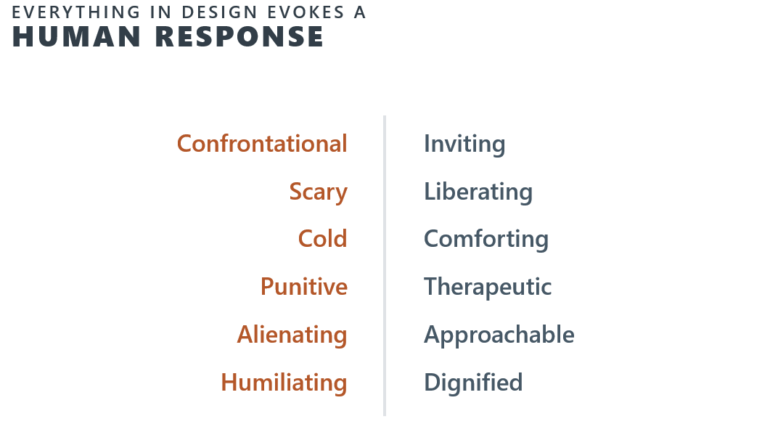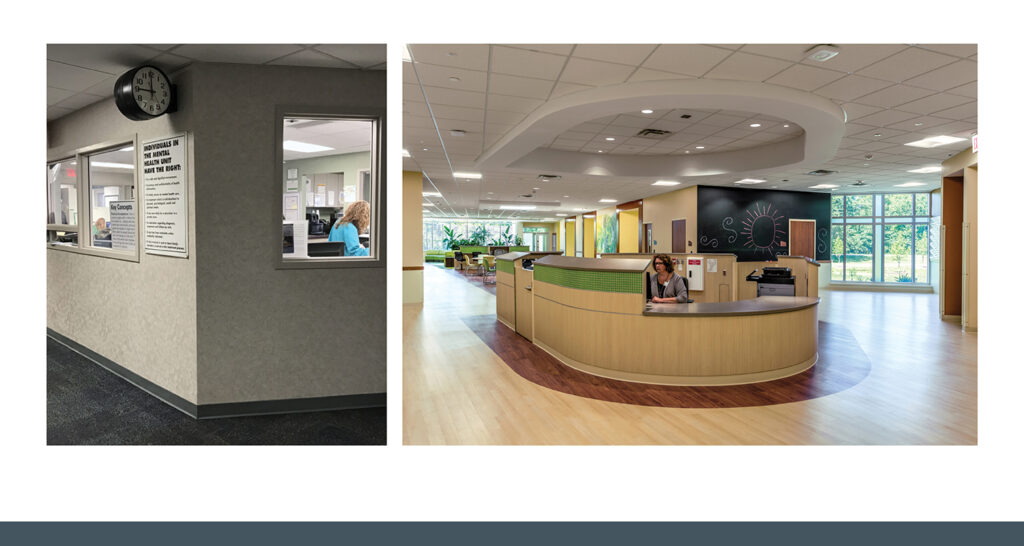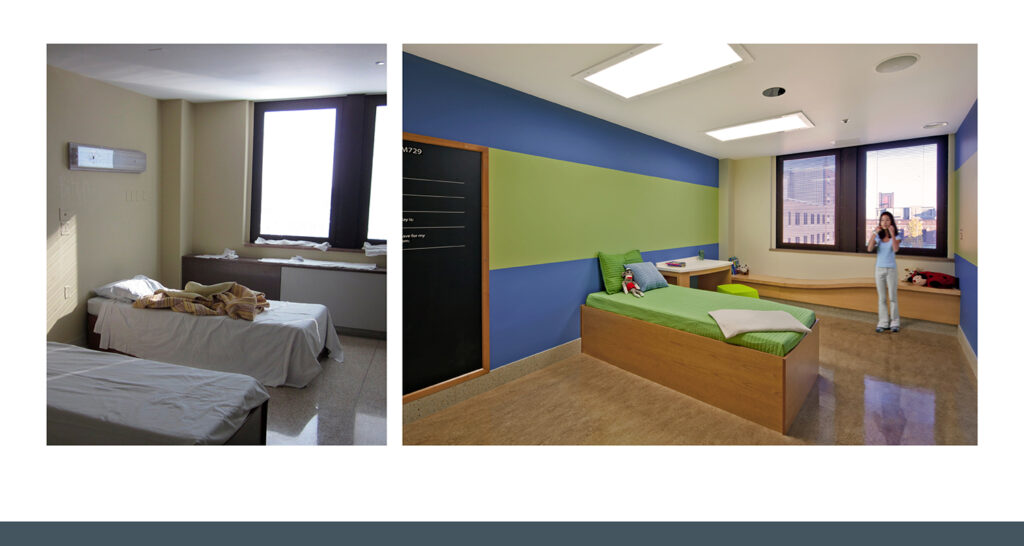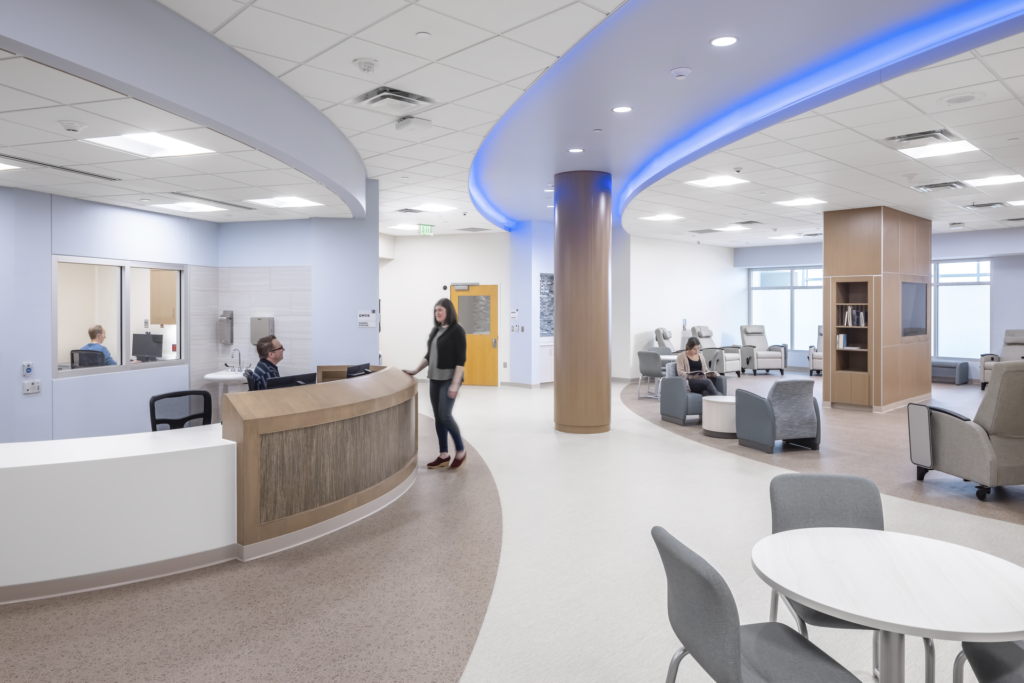WHAT IS HUMAN-CENTERED SAFETY®?
Human-Centered Safety® is an integrated, innovative design approach focused on improving treatment outcomes, safety, and patient satisfaction across the complex needs of today’s behavioral health centers.
BWBR believes that to promote behaviors that are prosocial and therapeutic, whether in an open environment or secure facility, we have to see the environment from a human-centered lens. By putting the safety and security of patients, families, staff, and providers at the center of the design process, we can create healing environments that enable staff to focus on their first priority – delivering compassionate and effective care.
ENVIRONMENT SHAPES BEHAVIOR
Research tells us that humans respond to stimulation, whether positive or negative. When people are in a state of crisis, the environment must provide stimulation that facilitates healing. While recent regulations have emphasized a renewed focus on ligature resistance, we see that as the baseline of design for mental and behavioral health on top of which we build a human-centered approach that supports the whole person.
A control-based strategy is not effective. By focusing on authority and restrictions, patients are denied choice and humanity and are forced into more defensive or rebellious positions. By contrast, human-centered design fosters a self-regulated response, provides guidance or boundaries, grants patients the power to decide, and establishes trust with staff.
If the words on the left (below) are what patients often feel in a behavioral health space, will this support their healing and stability? Conversely, imagine the difference if the environment inspired the feelings on the right.

With these descriptions side by side, you can start to see the range of options for how mental and behavioral health facilities can feel to patients, families, and staff. Our charge is to create spaces that support the great work that our clients do as they treat patients. We do this by supporting positive behaviors rather than by attempting to punish problem behaviors.
THE HUMAN-CENTERED SAFETY® APPROACH
The primary guiding principles/goals of Human-Centered Safety design include:
- Going beyond anti-ligature applications of hardware solutions.
- Reducing the negative stigma of behavioral health through a compassionate and thoughtful design approach.
- Establishing a clear and comprehensive vision to create a healing and safe environment for people suffering from behavioral health issues.
- Designing an extraordinary workplace for caring, professional staff to feel safe and find a supportive and collaborative environment for delivering effective care.
- Generating a thoughtful and responsive healthcare experience from patient, family, and care-giver’s point of view.
- Connecting and integrating all elements of a care environment: medical models, provider needs, security, facility maintenance, and institutional culture.

Traditional vs. Human-Centered Safety Approach to Unit Entry

Traditional vs. Human-Centered Safety Approach to Inpatient Room
TO LEARN MORE ABOUT BWBR’S HUMAN-CENTERED SAFETY® APPROACH, CHECK OUT OUR BEHAVIORAL HEALTH PROJECTS, OR GET IN TOUCH FOR MORE INFORMATION.
Additional Resources:
[ENHANCE] Magazine: Human-Centered Safety Issue
Human-Centered Safety: Seeing Mental Health Through a Different Lens
Emergency Mental Health Services: The EmPATH Model
Or check out our research papers here.


